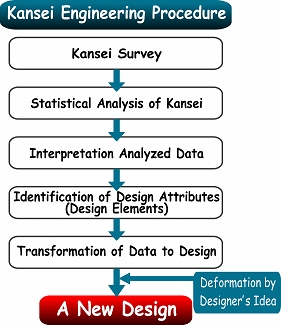Is Kansei Engineering Coming West?
Tuesday, September 23rd, 2008Kansei Engineering originated in Japan and is a structured approach to sensorial design or designing for the senses. It has shaped many successful products including Mazda’s cars and Sharp’s introduction of the LCD-based camcorder which allowed them to capture an extra 21% of that market.
The relationship between “Kansei” or sensory and mental states and the product’s features, functions and form are empirically studied. The findings are used to design new products and services that include specific elements (features, functions, form) to create a sensory or mental impact.
The modeling and analysis is focused on product semantics or a statistical analysis of Kansei words (mostly adjectives that describe perceptions, emotions, impressions and feelings) and how changes in particular product featuress correlate to the words. Data is gathered from user surveys and statistical analysis can be done using regression, principal component analysis or more exotic pattern finding techniques such a neural nets, genetic algorithms and rough sets. Questions are designed using bipolar attributes and participants are asked to rate where a product falls on a continuum or scale (e.g. simple to complex or exciting to boring). In some approaches, enthnographic, observational and interviewing techniques are also used to get at Kansei words.
A flowchart from the International Kansei Design Institute illustrates the process:



